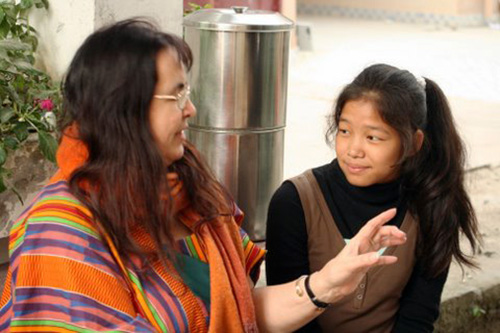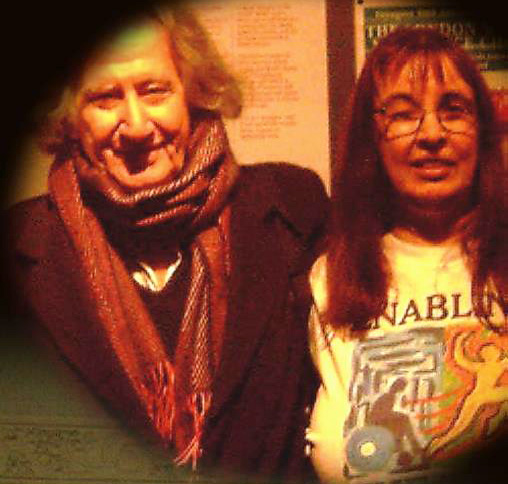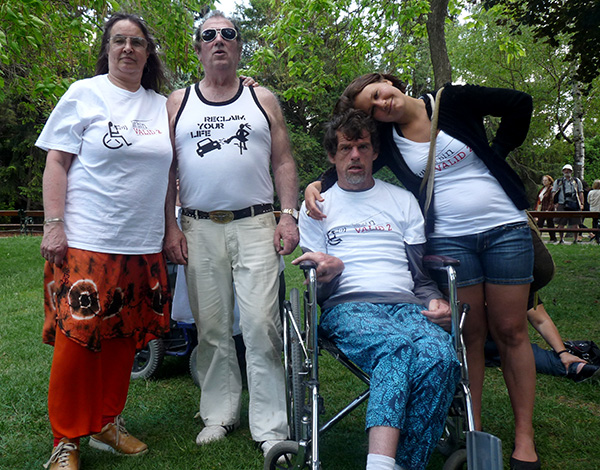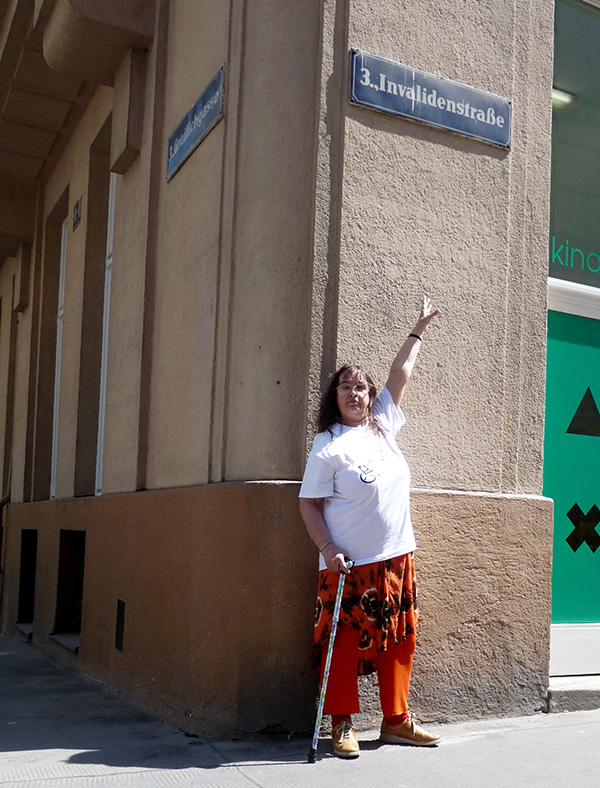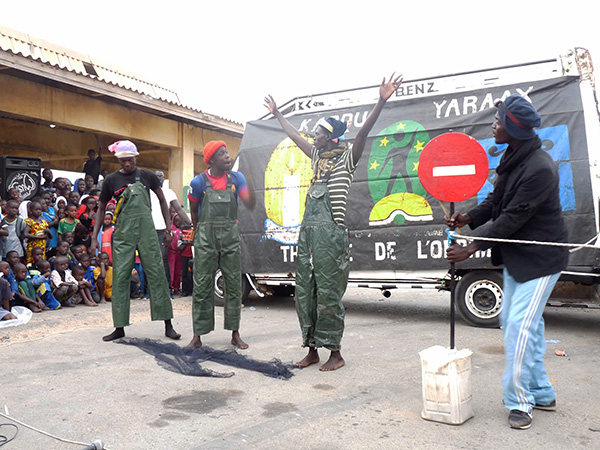Rethinking Disability through Enabling Theatre
An Interview with Susan Quick
BY EMMALY WIEDERHOLT
Susan Quick was first a dancer and later an actress before sustaining a head injury that changed her life. The native of Hebden Bridge, England built upon Augusto Boal’s Theatre of the Oppressed to create Enabling Theatre, a way of using theater to address and support disability. She shares her story and insights on how theater and movement can be an enabling force in people’s lives.
~~
Tell me a little about your involvement in theater and dance?
I’ve been involved in dance since I was two years old. My mummy took me to ballet classes before I started school, so dance has been a part of my life since the beginning. However, I was considered too tall to be a ballet dancer, so that never went anywhere. But I’ve always danced in different forms. When I was living in the states for three years, I danced with Batucajde Escola de Samba in San Francisco.
But it was theater that took me to the states originally. Theater was sort of an accident. I came to it through dance. I had a boring job as a finance administrator at a university. I decided it was rubbish, and not how I wanted to spend the rest of my life. A group of guys were putting on a rock musical called Blood ‘n Kisses, and were looking for dancers. I performed with the musical in Bristol and the Edinburgh Festival. It was my first introduction to theater.
A friend of mine signed up for a theater course. I thought it sounded interesting, and gave it a whirl. I studied theater for a year and, at the end of the year, got a job with The Oxford and Cambridge Shakespeare Company, which took me to America. I think it was my rather voluptuous figure that got me the role; I was playing a buxom barmaid in The Comedy of Errors. I toured America for three months with the troupe.
When we toured through Galveston, TX, I met some guys who had put together the Strand Street Theatre, and they offered me a job. When the tour ended in New York, I went back to Galveston and started working with the theater company. I worked with them for a year. During that time, they ran out of money, so I worked during the day in a local restaurant, and working in the theater in the evening.
I started dating a black guy, the evening cook at the restaurant. That’s when I discovered the essence of racism in the deep south. We decided to move to San Francisco, where we lived for a couple of years. I was a typist during the day and took on theater jobs in the evening.
I was part of a theater company that worked with kids, and we worked with a group with disabilities in Berkeley. It was my first experience working with disability through theater. Later, I found Augusto Boal’s Theatre of the Oppressed in a second-hand book shop in San Francisco. The book changed my life.
Augusto Boal and Susan Quick
When I decided to go back to England with my new husband, I got involved in a youth program combining drama and education. A friend of mine who was working for the Royal Shakespeare Company sent me a brochure. I happened to see that Augusto Boal was coming to Ireland to run workshops. I had to go and train with him. I went to Northern Ireland and made my way through tanks and soldiers to train with him for a week. It was mind-blowing. The following year, he came to London, and I trained with him again.
My husband then decided to go to Africa and find his roots. I said okay, and off we went. I got a job teaching, and that was the end of theater for a long time.
Years later, in 1995, I had a car wreck that nearly killed me. I was in the hospital for six months, and fully comatose for the first month. At the end of my recovery, I was house bound and unable to do anything for myself.
I started to come to terms with the issue of being disabled. I’d never thought about the politics and philosophy of disability before, but suddenly I found myself as a non-being, a person nobody acknowledged. I went into revolt. I didn’t want to be labeled as disabled.
At some point, I got to thinking about Theatre of the Oppressed. What I was dealing with was disability, but it felt like a form of oppression. I thought that maybe I could use theater to challenge disability. That’s when I got the whole idea of developing what I later called Enabling Theatre, which uses Boal’s Theatre of the Oppressed to look at the oppression of disability.
Our local council became interested in what I was doing and eventually sponsored weekly workshops. I discovered after I got out of the hospital that the concept of disability was divided into separate boxes. There were blind people, deaf people, wheelchair users… I was categorized as having a head injury. When I ran the theater workshops, we looked at disability not from the perspective of specific impairments, but from the perspective of how society is disabling us. I ran these workshops for about five years. In that time, I made huge shifts. I started slowly taking more charge of my life. I also saw big changes in other participants as well who have come to terms with their disability and moved beyond it.
What, in your experience, is the most important difference between conventional modes of theater and Theatre of the Oppressed?
Augusto Boal uses theater as a way to look at issues and make changes. It’s not about people sitting and watching while other people perform. There’s a great story he tells: when he first started, he would invite the audience to come up with ideas for how to resolve the oppression they were tackling, and the actors would act out the suggestions. One day, a woman kept telling the actors what to do, but they couldn’t get it, so Boal invited the woman onto the stage. She went up there, and that was the beginning of Forum Theater, where people in the audience come up and show how they would deal with the oppression. Theatre of the Oppressed confronts the audience and says, “You’re part of this too. It’s not enough to clap. We need your ideas.”
What are some ways you’ve seen this same approach used with dance?
I took a course in combining theater and disability and, as part of that course, a man named Alan Martin taught a workshop with us. He had severe cerebral palsy, and was in a wheelchair. He needed a caretaker to help us understand what he wanted to say, but he nevertheless ran dance workshops. It was bloody amazing. When I finally invited Augusto Boal to my hometown to run workshops with disabled people, I brought Alan. Boal was so impressed with Alan, he wrote about him in his last book. There’s definitely a crossover between theater and dance.
Very often in Theatre of the Oppressed, we’re trying to convey our emotions, so we go into movement. If you can have a conversation without saying a word, that’s close to dance.
Boal developed two different forms. Forum Theatre combats issues in the outside world. But he also developed Rainbow of Desires, which addresses internal oppression. Rainbow of Desires is closer to dance in that you explore internal emotions through your body, not necessarily through words. I commonly use that form with people who have mental health issues.
What are some ways you’d like to expand your work in the future?
I’ve just been back to Africa for the first time in 20 years and loved it. I went to Senegal last Christmas to a Theatre of the Oppressed 10-day workshop led by Uri Noy Meir. Following Uri’s workshop, I was invited to go back in July to run workshops with disabled Senegalese. The Arts Council gave me a grant to go, so I’m going back to Senegal again in the end of November. To work with a group of disabled Africans and explore Theatre of the Oppressed with them is great.
~~

